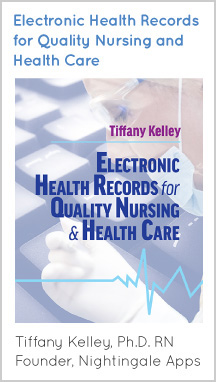Did you know that the first electronic health records (e.g., EHRs) were developed in the late 1960’s and early 1970’s? I did not know this when I first came to know them in the early 2000’s. I naively thought, ‘how hard can it be to take paper records and turn them into an electronic form?’.
Well, the answer to that question, it is very hard! Despite the efforts during my first few years with EHRs, I was unaware of the fascinating history that came alongside this new way of digitalizing patient information until I began writing my book on EHRs. EHRs are a case study for demonstrating that healthcare innovation is a different marketplace. With so many influential factors, bringing innovation to healthcare environments takes the time that it takes.
Dr. Lawrence Weed conceptualized the idea for a ‘problem oriented medical record’ in 1968. His thoughts were published in the New England Journal of Medicine. He saw the opportunity to leverage technology in a way that physicians could manage patient information according to problems and understand the whole patient as a person. Dr. Weed saw the opportunity to support the clinician with information needed for decision making, and care delivery. Weed did not use the term ‘electronic health record’ or EHR, nor did any of his peers that were developing the first EHR systems. The term used at that time was ‘computerized patient record’ or CPRs.
During that time, several organizations began developing systems for use within their facilities: Duke, Massachusetts General Hospital, Beth Israel Deaconess Medical Center and the Department of Veterans Affairs are just a few of these pioneers. These efforts began nearly 50 years ago. However, fast forward 40 years and the United States had been at less than 2% adoption in 2009.
While we may not think of it now, the EHR is an innovation in healthcare. AHRQ defines healthcare innovation as, “the implementation of new or altered products, services, processes, systems, policies, organizational structures, or business models that aim to improve one or more domains of health care quality or reduce health care disparities” (https://innovations.ahrq.gov/faq). The EHR is an example of how diffusing innovation in healthcare does not happen overnight.
I sometimes wonder where we, the United States, would be had the HITECH Act not made financial incentives available to accelerate the adoption of EHRs in health care organizations. I suspect the adoption rates would not be what they are today. As of the end of Q2 of this year, less than 2% of hospitals and outpatient practices were at a Stage 0 on the HIMSS EMRAM (electronic medical record adoption model). In less than 10 years, the United States went from less than 2% adoption to less than 2% non-adoption!
Now, imagine you were Dr. Lawrence Weed or any of the pioneers that developed the early EHRs. Imagine the hurdles experienced to bring the idea and early concepts to life and acceptance. Imagine how many people said ‘that will never happen’ or ‘you can’t do that’ and over how long of a period of time it likely was expressed by others. Fifty years is a very long time.
EHRs faced financial, technical, organizational and legal barriers toward rapid adoption. The HITECH Act helped to breakdown some of the financial barriers. In general, healthcare innovation needs to overcome each of these barriers toward successful implementation and adoption.
In some cases, the technical environment and the organizational culture wasn’t quite ready for EHRs. Legally, the protection of electronic PHI was not defined until 2003 with the Security Rule. Thus, despite the conceptualization and recognition of the potential in the 1960’s, the healthcare innovation took the time that it needed before it could be accepted into the environment.
I believe this is a helpful perspective for those that are developing new innovations in healthcare. The general ecosystem of innovation tends to paint a picture that one can develop a solution and have it lead to rapid widespread adoption within a very short period of time. (For example, Instagram started in 2010 and was sold to Facebook in 2012 for 1B). Yet, the healthcare marketplace is not the same as the consumer marketplace. In many cases, the consumer of the innovation in healthcare is not the purchaser of the product. Additionally, the previously mentioned barriers become less conflated when managed at an individual (e.g., person/user) level rather than a system (e.g., health care organizational) level. Thus, the adoption of new innovations within healthcare organizations requires the time that it takes.
Best,
Dr. Tiffany Kelley RN
For more information about my book, Electronic Health Records for Quality Nursing and Healthcare, visit Destech Publications at: http://bit.ly/2a6pJpz.



